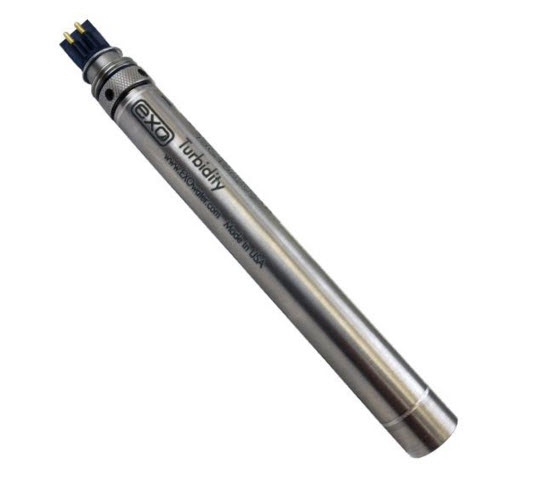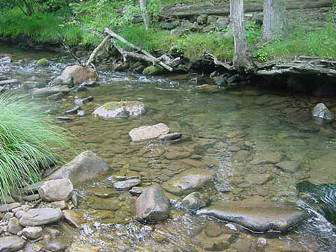How to Get the Best Turbidity Measurements
(Updated April, 2020)
Turbidity is a common water quality parameter measured to provide a sense of the clarity of a body of water. Oftentimes the turbidity of the water can lend information in regards to the health or well-being of the water body. It is important to note that the appearance of high turbidity does not necessarily mean the water body is suffering at that point in time.
However, the turbidity level of the water can adversely affect the ecosystem if it changes drastically and maintains that drastic change whereas short-term turbidity “events” may be temporary and have little overall effect on the system.
As with any water quality parameter, it is good to have historic data for any site where turbidity is being monitored so trends can be tracked and the occurrence of an event can be captured. These are a few reasons why turbidity can be a valuable parameter when obtaining a water quality profile of a water system.
The Importance of Turbidity Calibrations
Before you start collecting turbidity data, it is important you follow the manufacturer’s recommendations regarding the calibration techniques and approved calibration solutions.
Typically it is recommended to use the calibration hardware provided with the instrumentation to perform the calibration. Many turbidity sensors require a specific distance from the face of the sensing  area to the bottom of the calibration cup in order to avoid interference from the cup itself during the calibration process. In an effort to conserve calibration solutions, many users want to use a smaller calibration vessel.
area to the bottom of the calibration cup in order to avoid interference from the cup itself during the calibration process. In an effort to conserve calibration solutions, many users want to use a smaller calibration vessel.
Unfortunately, if a smaller vessel is used, an improper distance between the face of the sensor and the bottom of the calibration cup will result, and higher offsets during the calibration will occur because the sensor will see the bottom of the cup as turbidity.
As a result, this often contributes to a range of negative turbidity readings in the field, especially in low turbidity environments.
Therefore it is a good practice to always review the manufacturer’s recommendations when performing all calibrations and pay special attention to interferences that can be introduced if the proper procedure is not followed. (Learn more, watch, EXO Calibration - Turbidity).
Which Calibration Solution Should I Use?
The calibration solutions you use during the calibration are just as important as the hardware. The manufacturers of turbidity sensors will recommend which solutions or standards are approved for successful calibration and these approved solutions are the only ones that should be used.
In addition, some manufacturers, like YSI, have turbidity solutions that are specifically made for the instrumentation they provide and even though other solutions may appear to be the same they, in fact, are not.
YSI recommends only two types of turbidity solutions for a successful calibration. The first is the AMCO-AEPA turbidity standards prepared and tested specifically for YSI turbidity sensors and the other is Formazin based standards whether they are self-prepared, purchased with specific assigned values, or purchased at high concentrations and diluted. (Learn more, YSI Calibration Solutions and Buffers Expiration Times).
Please note: Formazin standards will settle so it is always necessary to follow the turbidity standard manufacturer’s recommendations when handling the solution for proper suspension and dilution techniques as well as using it within the specified timeframe during calibration. The AMCO standard does not settle and typically it is not recommended to perform dilutions with it.
The key point here to remember is not all AMCO standards are prepared or tested in a manner that necessarily makes them conducive to be used to calibrate all turbidity sensors. The AMCO turbidity standards which should be used to calibrate YSI turbidity sensors should only be purchased from YSI. Other AMCO standards have not necessarily been tested to YSI’s specifications and it is highly likely the value of the turbidity standard printed on the label of the standard does not reflect what a YSI turbidity sensor will read when placed in that standard.
As a final note on calibration standards, deionized (DI) or distilled water is often used for the zeroing portion of the calibration and this is allowable to help reduce cost. The precaution here is to realize not all DI or distilled water is created equal and cannot be assumed to contain zero turbidity. DI water may register up to 1 or 2 NTU (FNU).
Using DI or distilled water for calibration and then taking measurements in waters containing low turbidity may exhibit slightly negative readings since the water that is being measured may actually contain less turbidity than the zero standards that were used during the calibration. For these applications, it is typically necessary to use certified zero standards for calibration like those previously mentioned.
Learn more about our Turbidity Standard.
Which Turbidity Units Should I Use (NTU vs. FNU)
Another area of common confusion is the units associated with turbidity readings. These are typically represented as Nephelometric Turbidity Units (NTU) or Formazin Nephelometric Units (FNU) for most in-situ turbidity sensors. In the early days of turbidity data collection, it was common to use NTU as the units regardless of the actual method used to collect the data but more recently it has become desirable to start using units that reflect the method in which the turbidity measurements were obtained.
Technically speaking NTU is a unit of measure that is best used to represent turbidity readings captured using white  light at a 90-degree detection angle and FNU is best used when the data is measured using an 860 nm light (near IR) with a 90-degree detection angle (ISO7027 compliant).
light at a 90-degree detection angle and FNU is best used when the data is measured using an 860 nm light (near IR) with a 90-degree detection angle (ISO7027 compliant).
The use of the appropriate units associated with the measurement helps provide additional information to help pinpoint limitations and potential interferences in regard to the data quality. Some manufacturers like YSI have run into a little predicament in regards to turbidity units in recent years. YSI has been around for over 70 years and has offered in-situ turbidity sensors since early 1995. As was mentioned previously, turbidity was expressed in NTU in those early days of field measurements even though the method used to collect the data was ISO7027 which we now know is typically represented in FNU.
YSI’s turbidity sensors have always followed the ISO7027 method so a better representation of the measurements would be to use FNU. The predicament comes in because many agencies have historic turbidity data that was collected as NTU and now newer YSI instruments like the EXO sondes and the ProDSS provide the option to record data in either of these units. So the agency collecting the turbidity data needs to decide whether they will continue using NTU or switch to using FNU.
The reality of the actual numbers associated with the measurements is that they will be comparable whether NTU or FNU is used for the units since YSI has always used a methodology consistent with ISO7027. The good news here is that no conversion of the data values would be necessary in the case of YSI instrumentation.
Hopefully, this information will help alleviate some of the uncertainty and confusion surrounding calibration and which units to use when recording turbidity data and help you collect the most accurate turbidity data possible.
If you need further assistance or have questions about topics covered in this blog please feel free to contact our Technical Support group.

Additional Blog Posts of Interest
Continuous Turbidity Monitoring in Ohio Rivers Using Modified Sidestream Method
The Evolution of Water Quality Monitoring
Webinar: Expert Tips for Continuous Water Quality | YSI, Aquatic Informatics and Pennsylvania DEP
Water Quality Monitoring Buoys Protect the Housatonic River | Application Note